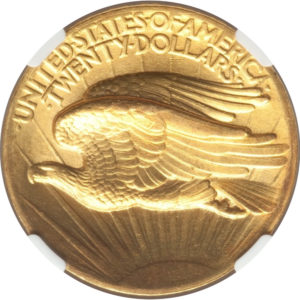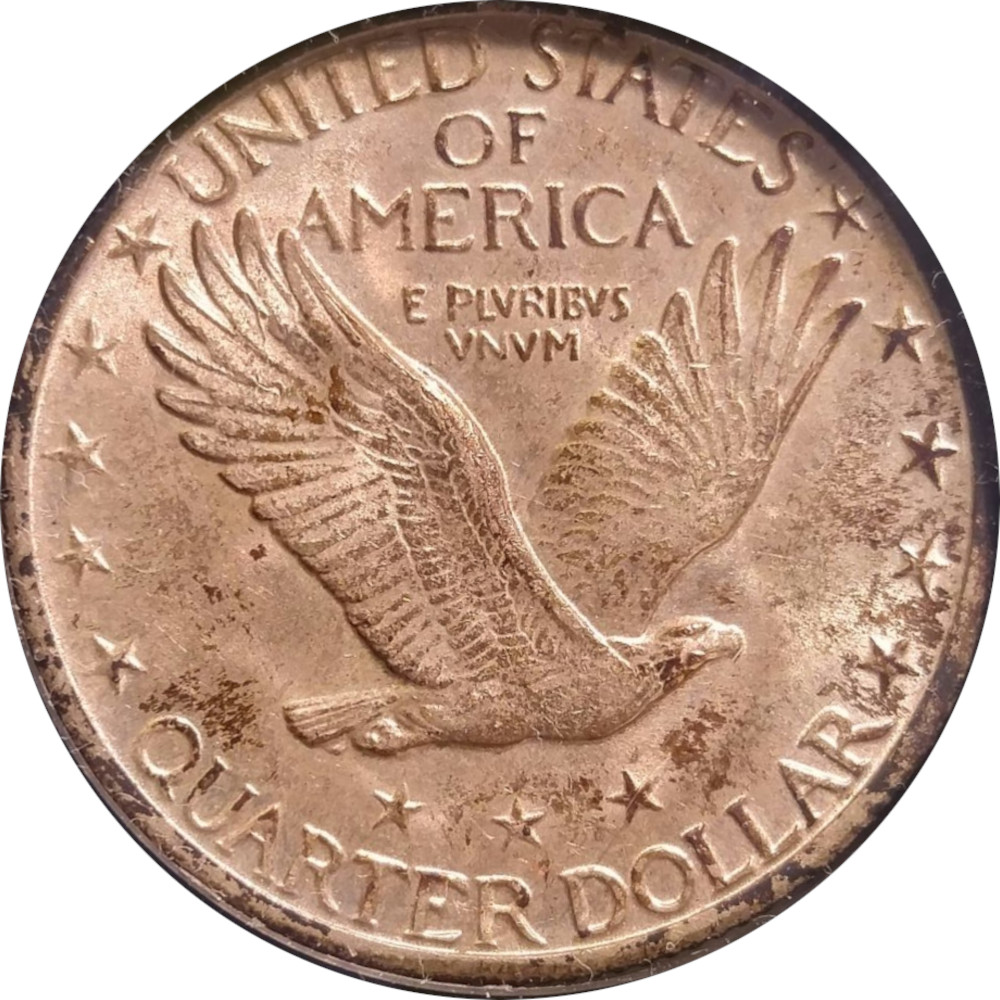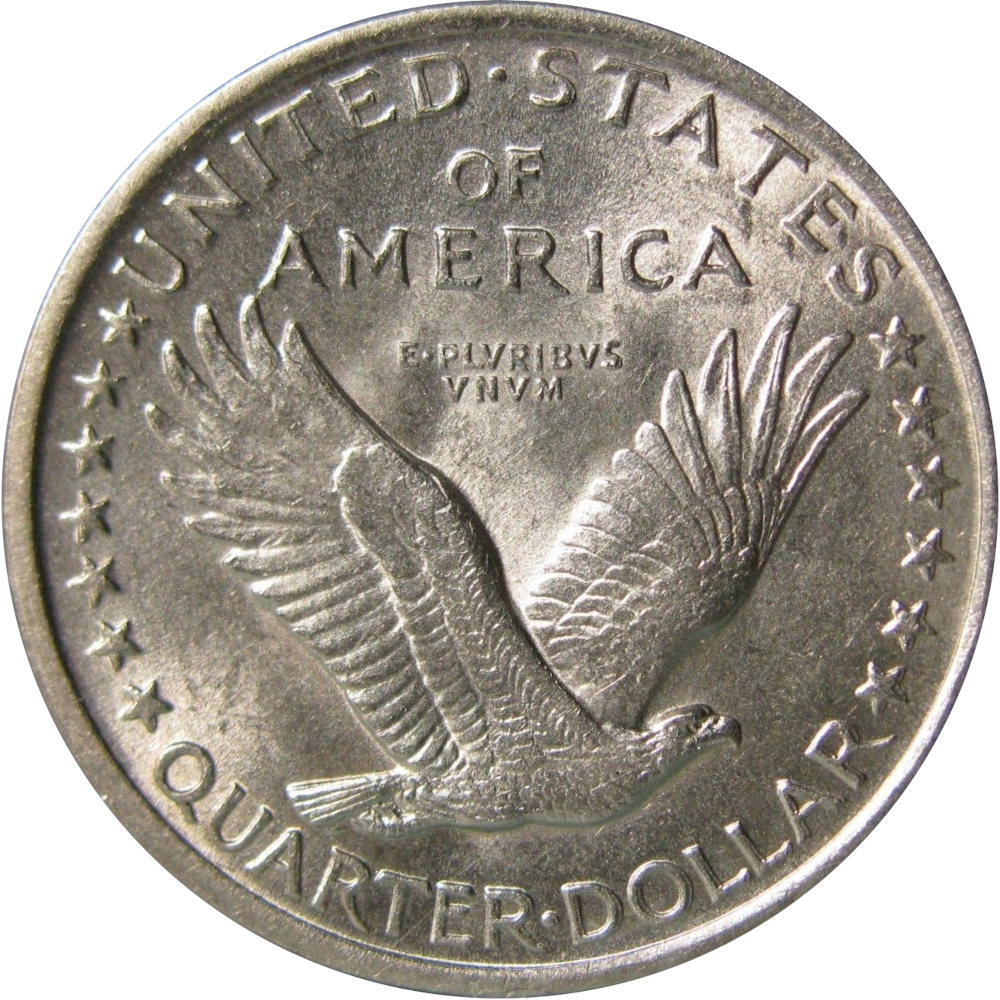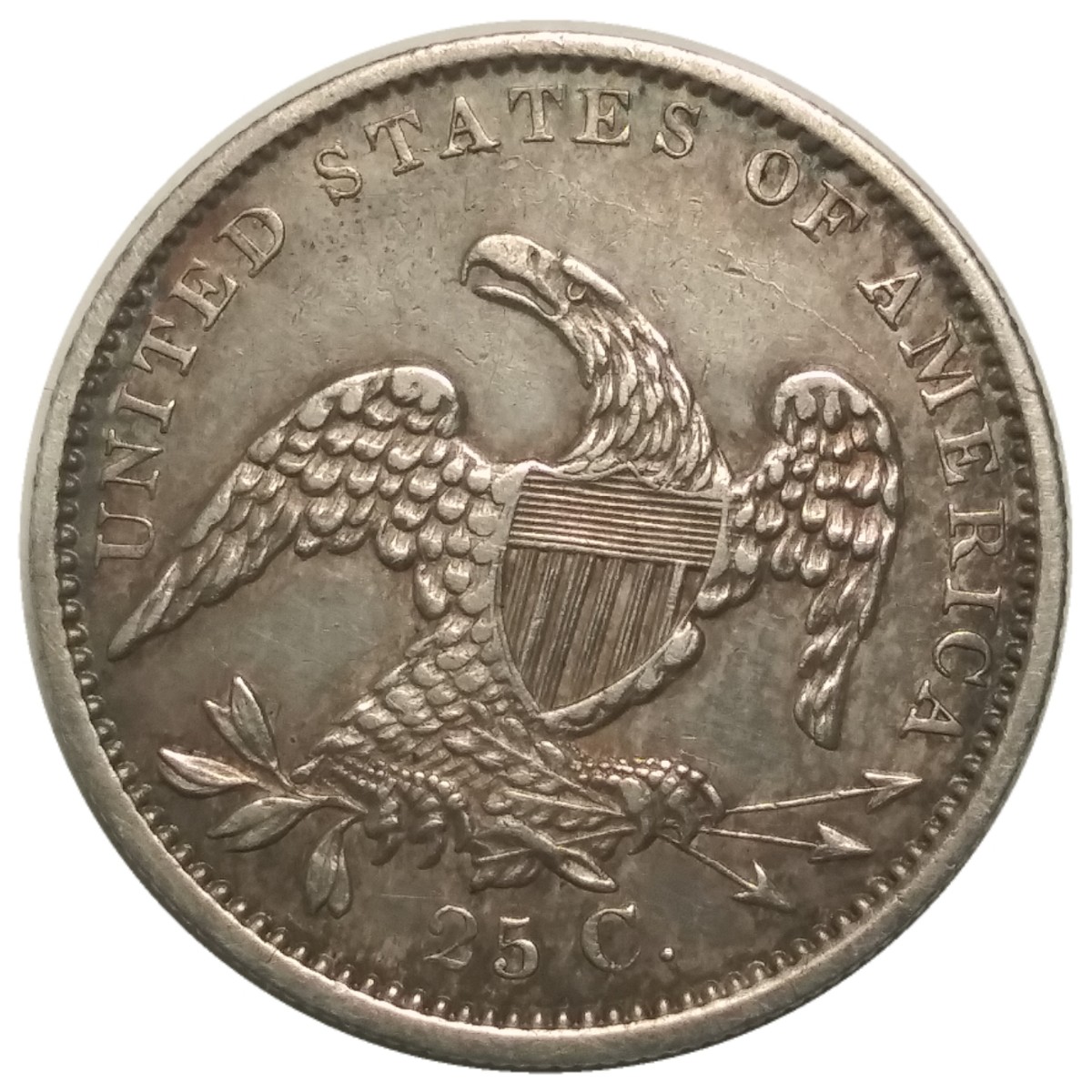1916 25c Standing Liberty Quarter NGC MS66 Full Head.
In January 1915, Assistant Secretary of the Treasury William P. Malburn sent Treasury Secretary William G. McAdoo a memorandum about the silver subsidiary coinage, noting that “the present silver half dollar, quarter, and dime were changed in 1892, and a new design may, therefore, be adopted in 1916. This can be done any time in the year.” In reply, McAdoo wrote “[l]et the mint submit designs before we try anyone else.” on the memorandum.
In April 1915, Robert W. Woolley took office as Mint Director. On April 14, he asked Superintendent Joyce to request Chief Engraver Barber, then in his 36th year in office, to prepare new designs. The same day, Malburn requested the opinion of the Treasury Department’s Solicitor concerning the Mint view that it could strike new designs for the three denominations in 1916. On April 17, the Solicitor’s Office responded that the Mint could change the designs. At the time, the Mint was intensely busy producing the Panama-Pacific commemorative coin issue, and immediate action was not taken. In October, Barber was summoned to Washington to discuss coin designs with Woolley, though it is uncertain whether or not he had already prepared sketches for the new coinage.
On December 3, Woolley met with the Commission of Fine Arts. Woolley asked the Commission to view sketches produced by the Mint’s engraving department. Barber was present to explain the coinage process to the Commission members. Woolley suggested to the members that if they did not like the Mint’s work, they should select sculptors to submit designs for the new pieces. It was Woolley’s intent to have distinct designs for the dime, quarter and half dollar—previously, the three pieces had been nearly identical. The director informed the Commission that as the existing coinage had been in use for 25 years, it would have to be changed—something which numismatic historian David Lange calls a “misinterpretation of the coinage laws.”
The Commission disliked the sketches from the Mint (submitted by Barber) and selected sculptors Adolph Weinman, Hermon MacNeil and Albin Polasek to submit proposals for the new coins. The sculptors could submit multiple sketches. Although the Mint could decide to use a design on a denomination not intended by its sculptor, the designs were not fully interchangeable—by statute, an eagle had to appear on the reverse of the quarter and half dollar, but could not appear on the dime. Woolley hoped that each sculptor would be successful with one piece.
The three sculptors submitted design sketches in mid-February, and on February 23 met with Woolley in New York so the artists could make presentations of the work to him and answer his questions. After discussions between Woolley and McAdoo, Weinman was notified on February 28 that five of his sketches had been selected—for the dime and half dollar, and the reverse of the quarter. The same day, Woolley wrote to MacNeil to tell him he would sculpt the quarter’s obverse, and to Polasek to inform him of his lack of success. Members of the Commission persuaded Woolley that so much should not be entrusted to a single artist, and MacNeil was allowed to design both sides of the quarter, subject to the sculptor producing a design satisfactory to Woolley.
On March 3, the new coins were publicly announced, with the Treasury noting, “[d]esigns of these coins must be changed by law every 25 years and the present 25 year period ends with 1916.” The press release indicated that the Treasury hoped production of the new coins would begin in about two months, once the designs were finalized. The same day, Woolley wrote to Mint Engraver Barber, telling him that his sketches were rejected, and that models from Weinman and MacNeil would arrive at the Philadelphia Mint no later than May 1. According to numismatic historian Walter Breen, Barber became “sullen and totally uncooperative”. Lange notes that “numerous delays were encountered as the artists fine-tuned their models while simultaneously avoiding obstacles thrown in their path by Barber. While his observations regarding many aspects of practical coinage were quite accurate, they clearly could have been presented in a more constructive manner.” In his book on Mercury dimes, Lange notes that Barber, by then aged 75, had been “compelled over the past ten years to participate in the systematic undoing of a lifetime’s achievements”; he had to participate in the process which resulted in coins designed by others replacing ones designed by him.
With the new pieces, all American coins would have had a recent change of design (the Morgan dollar was not then being struck). According to a column in The Art World magazine later in 1916,
“Since that day [the 19th century] much artistic progress has taken place in our coinage. Sculptors of reputation have been employed with admirable results …And now we are to have a new half dollar and a new dime by Weinman and a new quarter by McNeill [sic]. Altogether, in the retrospect, it seems an incredible achievement.“


















